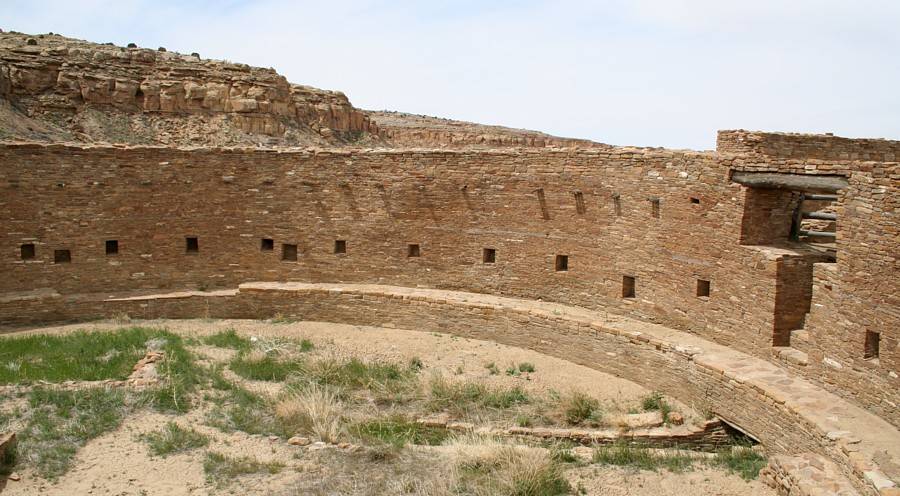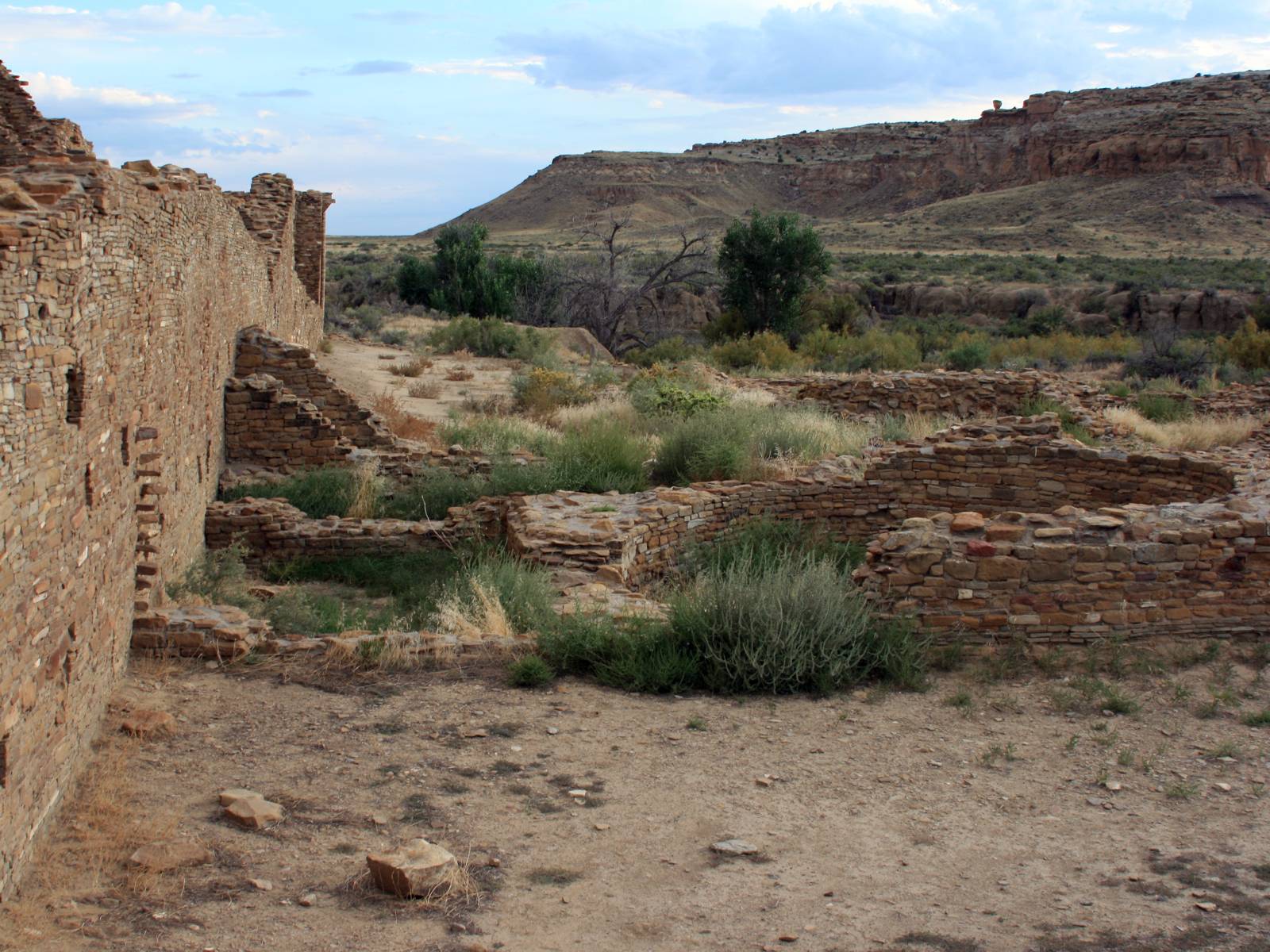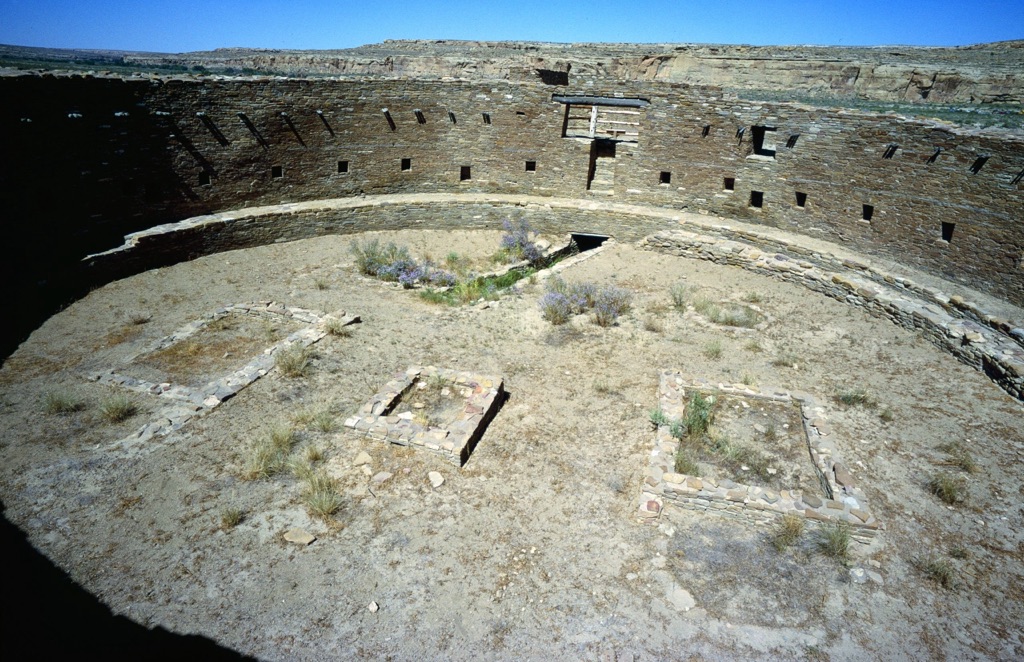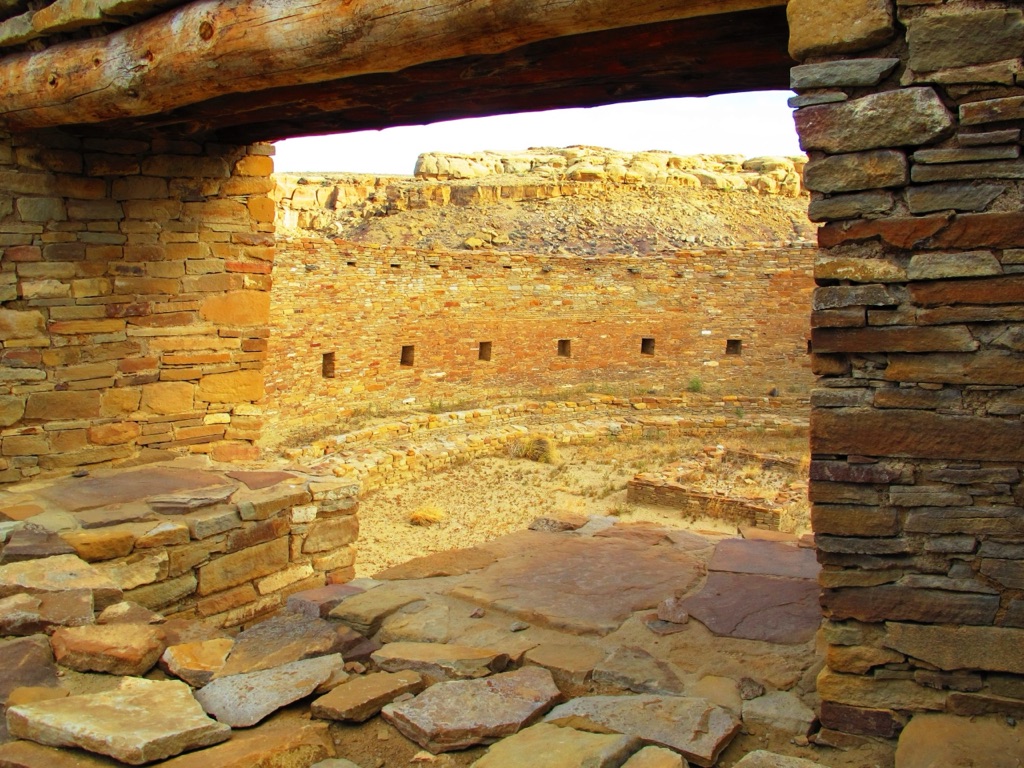Casa Rinconada: An Insight into Ancestral Puebloan Great Kivas
Casa Rinconada stands as a significant archaeological site within the Chaco Culture National Historical Park in northwestern New Mexico, United States. This site, located atop a ridge adjacent to a small rincon and directly across from Pueblo Bonito, offers a unique glimpse into the architectural and ceremonial practices of the Ancestral Puebloans.
Get your dose of History via Email
Architectural Features of Casa Rinconada
Casa Rinconada is distinguished as an isolated great kiva, one of four in Chaco Canyon, and is the largest excavated great kiva in the area with a diameter of 64 feet (20 m). The structure embodies all the typical elements of great kivas, including a masonry firebox, an inner bench, four large seating pits that served as roof supports, masonry vaults, and 34 niches divided into two sizes encircling the kiva. An unusual feature of Casa Rinconada is a 39-foot (12 m) long underground passage, approximately three feet deep and almost three feet wide, entering the room from the northern antechamber. This passage, dug out of the sandstone and shale, likely facilitated a dramatic entrance for performers during ceremonies, allowing them to emerge suddenly and surprise the audience.

Excavation and Reconstruction
The site was excavated in 1930-31 by archaeologists Gordon Vivian and Reiter, along with the University of New Mexico/School of American Research field schools. During these excavations, a variety of ornaments, including beads and pendants made from different materials, were uncovered in the fill of the structure. Ceramics recovered suggest the site was used in the late-11th and early-12th centuries AD, with a single tree-ring date indicating construction may have begun in the mid-11th century AD. Vivian undertook partial reconstructions of Casa Rinconada in 1933, and further work on capping outer walls was conducted by Richter of the National Park Service in 1955.

The Significance of Casa Rinconada
Casa Rinconada is not directly associated with a great house but is located within a cluster of small house sites and is attached to a series of masonry rooms, including antechambers and possibly a series of rooms that originally encircled the kiva, similar to the Great Kiva at Aztec West. The presence of these structures suggests a complex social and ceremonial use of the space. The site’s occupation during the PIII period (1140-1200 AD) indicates its significance during a time of flourishing cultural development in the Chaco Canyon.
Casa Rinconada provides a fascinating insight into the architectural ingenuity and ceremonial practices of the Ancestral Puebloans. Its isolated location, architectural complexity, and the intriguing underground passage highlight the importance of great kivas in the social and ceremonial life of the Chacoan people. The excavations and subsequent reconstructions have allowed archaeologists and visitors alike to better understand the architectural and cultural significance of this ancient site.

Accessible through the Canyon Loop Drive and a 1/2-mile (800 m) trail off the Drive, Casa Rinconada continues to be a site of interest for those looking to explore the rich history of the Ancestral Puebloans and their architectural achievements in the Chaco Canyon.
Sources:
Wikipedia
Chaco Archive

